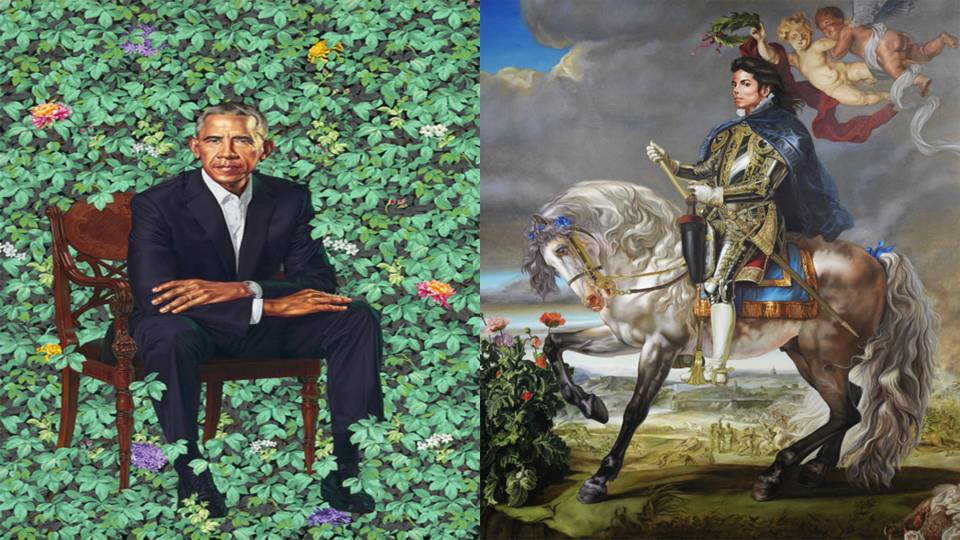Affirmative-Action Portraits
Gregory Hood, American Renaissance, February 13, 2018
Third-rate portraits portend a Third-World nation.
When the collapse begins, people generally don’t realize it. Rarely do statesmen acknowledge the Golden Age of their nation has passed; every leader tells his people their best days lie ahead. And the rituals of statecraft, above all, are designed to impose a sense of continuity and eternity. The nation is forever, the state is uncontested, and the polity is essentially the same as it was when it was founded. Even a revolutionary regime tries to co-opt the legitimacy of its predecessors, not confess to the masses that it is composed of mediocrities and frauds. Decline is usually subtle.
Except when it’s not. Like when the official paintings of Barack and Michelle Obama were unveiled at the National Portrait Gallery on Monday.
The President of the United States is the head of state as well as the head of government. The official portrait is a serious matter. Whatever we think of a president or his policies, he represents the nation. Thus, the official representation of a president is in some sense a representation of the nation.
President Obama chose as the artist for his portrait one Kehinde Wiley, a diversity twofer who is both black and gay. Mr. Wiley’s prints, all of which feature non-whites, portray blacks framed in kaleidoscopic backgrounds of flowers. This means Mr. Wiley does not have to grapple with perspective, and it gives each paining a cheap look, like an airbrushed drawing you can get on a t-shirt. He may not even do any of the actual work, as he seems to simply do the self-promoting while outsourcing the actual painting to the Chinese.
As lovingly chronicled in the Washington Post, Mr. Wiley thinks that blacks are portrayed too negatively in the media, and that this leads to horrors such as the death of Mike Brown in Ferguson, Missouri. His art is meant to correct “this charade, this two-dimensional caricature” of blacks.
Mr. Wiley’s artistic viewpoint is best described as resentful plagiarism, which contradicts his stated purpose of avoiding caricature. His characteristic technique is to substitute blacks into great works, such as Jacques-Louis David’s “Napoleon Crossing The Alps.” “If Black Lives Matter, they deserve to be in paintings,” Mr. Wiley claims.
The result is not an homage to classic works, nor even parody. It is affirmative action applied to painting, something below even being derivative. Blacks are inserted into other paintings out of a feeling of entitlement. Because the paintings seem cheap and uninspiring, they serve only to insult the original.
Read the rest of Gregory Hood’s article at American Renaissance.






















